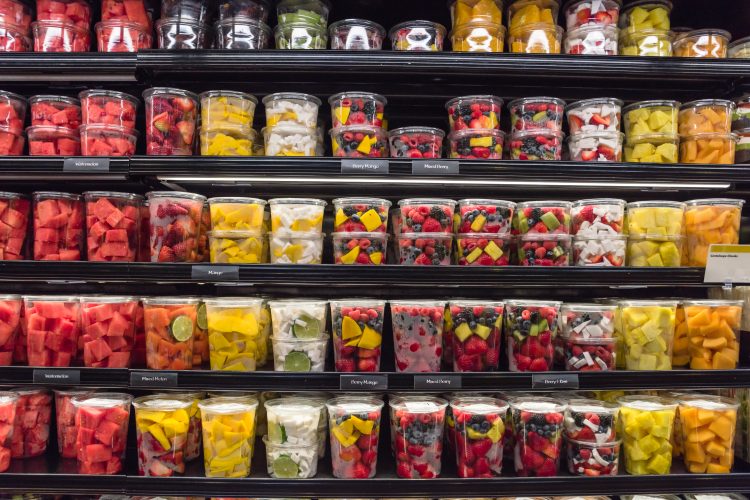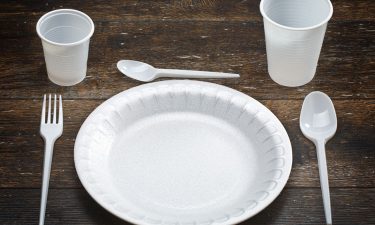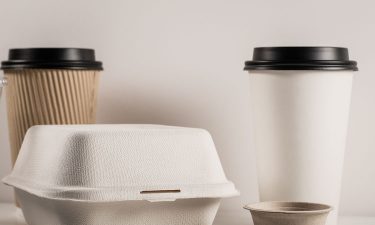Sustainability: New materials, new challenges
- Like
- Digg
- Del
- Tumblr
- VKontakte
- Buffer
- Love This
- Odnoklassniki
- Meneame
- Blogger
- Amazon
- Yahoo Mail
- Gmail
- AOL
- Newsvine
- HackerNews
- Evernote
- MySpace
- Mail.ru
- Viadeo
- Line
- Comments
- Yummly
- SMS
- Viber
- Telegram
- Subscribe
- Skype
- Facebook Messenger
- Kakao
- LiveJournal
- Yammer
- Edgar
- Fintel
- Mix
- Instapaper
- Copy Link
Posted: 6 August 2019 | Dr Stefan Stadler - Team Lead at Domino's Laser Academy | No comments yet
Many organic materials are reaching the market in a bid to replace plastics, however, the inherent issue is whether these products can be coded to the same standard as their plastic counterpart. Dr Stefan Stadler, Team Lead at Domino’s Laser Academy, looks at how companies can fight this barrier to commercial adoption.


With the topic of climate change on the rise, and statistics revealing that only 30 percent of Europe’s plastic is recycled, the demand among consumers for products and packaging that have an emphasis on sustainability continues to grow. Many organisations are already seeking to innovate beyond plastic packaging and embrace the alternatives. Brands will need to work closely with coding and marking experts to ensure that new packaging alternatives remain sufficient for use.


MEPs voted in favour of a EU directive banning single-use plastic including cutlery, cups and plates in March.
In March 2019, MEPs voted in favour of a new EU directive banning single-use plastic including cutlery, cups and plates, cotton buds, straws, drink-stirrers and balloon sticks from 2021. Companies are already re-evaluating the acceptability of petroleum-based material and multi-layer plastic films for food packaging, while tentatively exploring the potential of bio-based and recyclable alternatives.
However, although there are many alternative packaging solutions already available, they come with modifications that will impact coding and marking operations. As a result, more and more organisations are asking the question: How can we boost our sustainability and meet legislative demands, yet keep our current coding set-up?
Many organic materials are reaching the market in a bid to replace plastics, but there are few which are yet to be used as a full replacement industry-wide.
Starch, as well as many other plant-based materials, may well present a viable and more environmentally-friendly solution. However, the inherent issue is whether these products can be coded to the same standard as their plastic counterpart. Not knowing whether these alternatives can be coded, or how that code will react to the variables around it, poses a significant barrier to commercial adoption.
Future-proofing the coding and marking system
New 100 percent recyclable plastic materials, such as flexible packaging film, generally have thinner walls, which, when it comes to inkjet coding, means that companies need to ensure packaging remains EuPIA compliant through the use of food-safe inks. Furthermore, the change in material poses some challenges to laser marking technology. In order to explore the viability of the process, we need to assess how the substrate interacts with light; depending on what this first process uncovers, an appropriate laser setting can be selected and tested.
Post-laser, evaluation of the code quality as well as how the material has withstood the process needs to be measured through a range of scientific technologies.
Code quality is analysed using barcode systems and camera validation, and powerful 3D microscopes determine how the laser has impacted the substrate.
As code-ability and printability currently do not form part of the material’s specification for packaging suppliers, instances where the material composition has been changed slightly can occur. This substrate content difference can be due to compound unavailability, or simply a cost-saving measure. Essentially, the knock-on effect will reflect in the coding, and it might even lead to production downtime.
However, by working with a trusted coding and marking partner, organisations are able to access real material information about why specific substrates allow for clearer, higher quality codes, and more importantly, have the security of knowing that any causality will be identified quickly.
Conclusion


Manufacturers are starting to explore alternative packaging.
Global attitudes towards sustainability are changing, and brands are beginning to take the lead, with large manufacturers already starting to show their green credentials by exploring alternative packaging types to petroleum-based plastics.
However, as much as we may want it, sustainable design isn’t always commercially viable; it is important to understand the available options, and through extensive testing, determine the optimal coding solution. Doing so will enable companies to remain competitive without sacrificing quality or value. This way, packaging can become part of the solution, rather than a challenge to sustainability.
Biography
Stefan Stadler is Team Lead at Domino’s Hamburg-based Laser Academy, where he oversees investigative analysis in packaging solutions for laser coding. Stefan joined Domino in 2009 as Team Lead for the then Laser Sampling Lab, investigating the use of molecule spectroscopy to enhance the efficiency of Domino’s laser sample process. The time savings from this research allowed for an increase in laser coding training activities, leading to the launch of Domino’s Laser Academy in 2013.
He has a PhD in physical chemistry from the Ludwig Maximilian University, Munich, and is a regular speaker at conferences, seminars, and workshops, where he informs on the material science behind laser coding.
Related topics
Environment, Packaging & Labelling, Plant based, Sustainability









